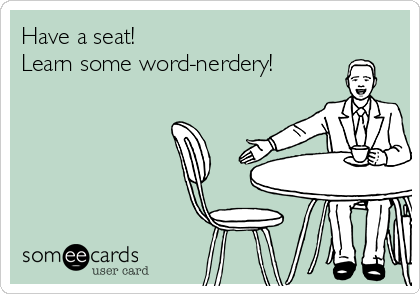Today’s installment of The Red Pen is about the appositive, a grammatical construction that you probably never knew existed — but if you do, you saw what I just did there and can probably stop reading.
Appositives and appositive phrases are nouns or nominal phrases set beside another noun to rename or identify it. They are used to provide either additional (non-essential) information or essential identifying information.
The appositive, a proud and haughty beast, can boldly interrupt a sentence. A versatile construction, an appositive can present itself at the beginning of a sentence. To illustrate a point, I am overusing the appositive, a construction that may also end a sentence.
Appositives can either be restrictive or nonrestrictive in nature, and whether or not an appositive is set off with commas is dependent on this piece of information. Let’s look at each type separately, starting with the nonrestrictive appositive.
A nonrestrictive appositive provides additional information and can be omitted without changing the meaning of the sentence. Let’s look at an example:
Photo by: maortizjr
In this case, the appositive phrase the world’s largest rodent provides additional information, but its inclusion is not necessary; the sentence does not lose meaning when omitting the appositive phrase. Nonrestrictive appositive phrases are set off by commas.
Every instance of the appositive in this post so far has been nonrestrictive. If I went ahead and eliminated all of them, the sentences would not lose their original meaning. Let’s take a look at one more example:
My roommate, a voracious reader, just finished another novel by Tolstoy.
Here, the nonrestrictive appositive a voracious reader is used to define (rename) my roommate. It provides more information, but its inclusion is not necessary to understand the sentence.
A restrictive appositive, on the other hand, does exactly what its name implies — it restricts the meaning of the noun being identified. By removing a restrictive appositive, you are leaving out essential information. For example:
John has three sisters. His sister Mary is an air traffic controller.
In this case, Mary is the restrictive appositive. Because we are referring to a specific person and distinguishing between sisters, the restrictive appositive contains essential information and cannot be left out.
My friend Bob helped me edit this blog post.
Even though it isn’t explicitly stated, we are going to make the assumption that I have more than one friend. As a result, Bob functions as a restrictive appositive identifying the friend who helped.
The poet e.e. cummings was known for his unconventional style.
In this case, the sentence would be too general without the use of the appositive. More than one poet has been known by their unconventional style, so we include the restrictive appositive to identify which one we are referring to.
Generally speaking, restrictive appositives are often used in common speech as identifiers, whereas nonrestrictive appositives are most commonly used in writing. Very seldom will you hear a person speaking in nonrestrictive appositives (as this would be weird).
For more examples of the appositive, check out the following resources:
- Appositives — Purdue University Online Writing Lab
- Grammar Handbook: Appositives — University of Illinois at Urbana-Champaign
The Red Pen is a series of tutorial/informational articles written by our editorial team here at Online Writing Jobs. If you notice grammatical mistakes in their writing, please circle the mistakes in red pen on your monitor and send us a screenshot. We will address it immediately.


